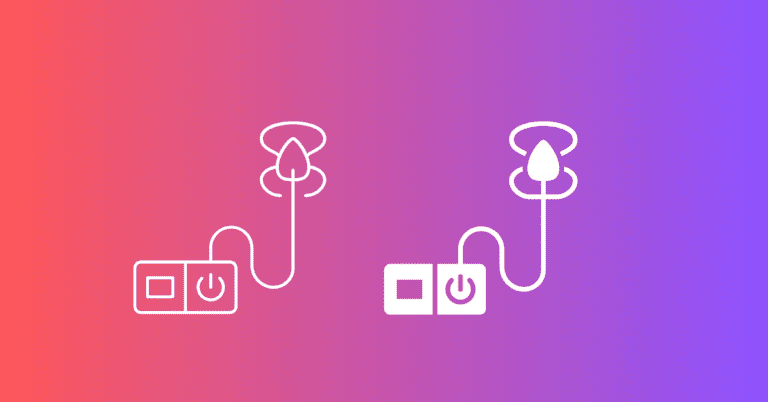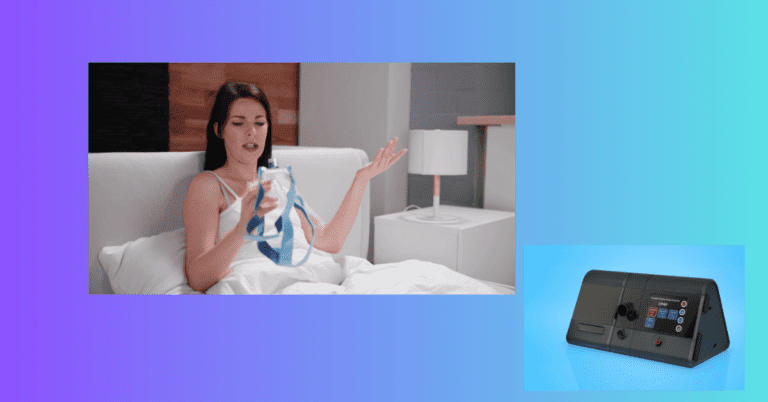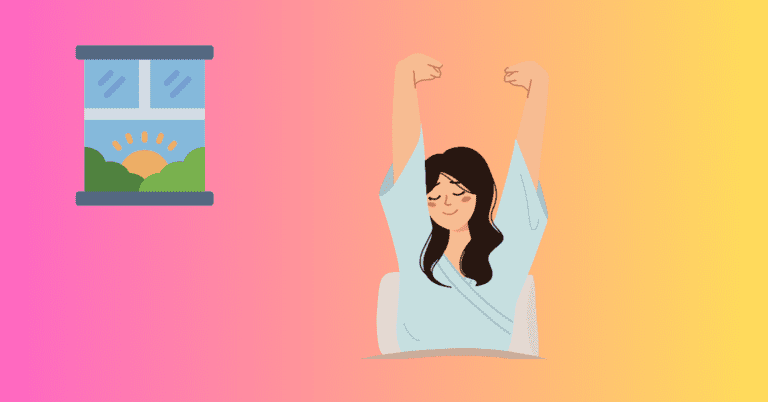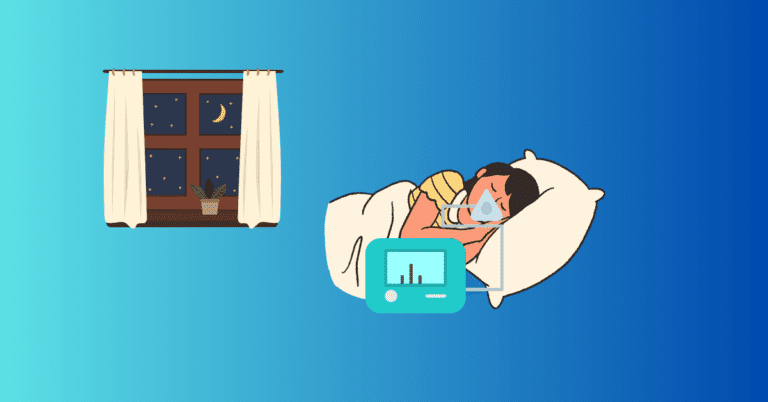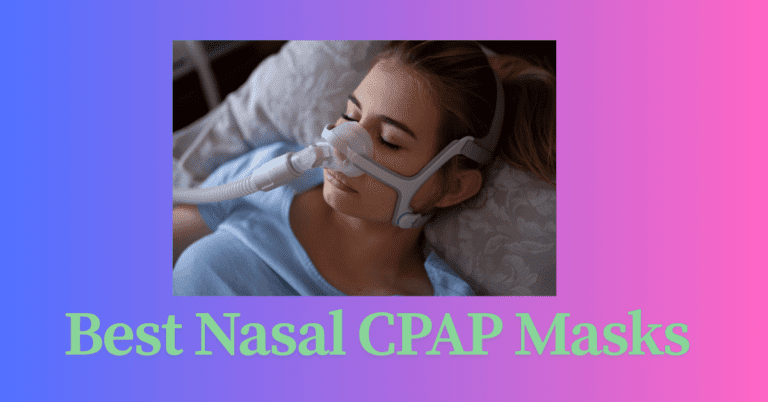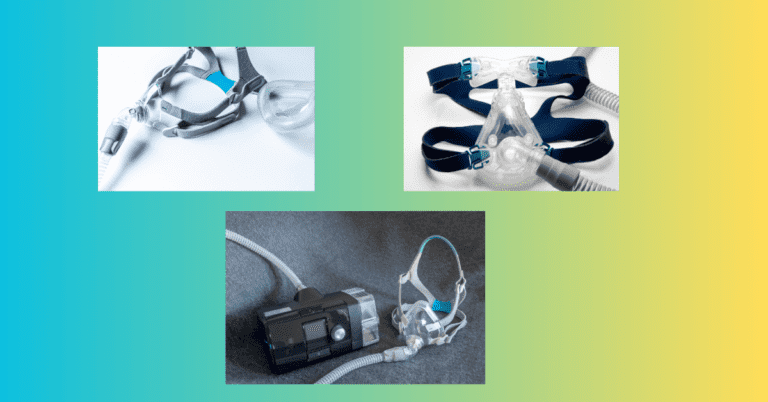Best Full Face CPAP Masks of 2025
Jeremy Smith is a long-term CPAP user and sleep apnea advocate. After being diagnosed with severe obstructive sleep apnea, he created ByJeremySmith.com to help others navigate CPAP therapy through personal stories, gear reviews, and practical advice.
Welcome to my round-up of the best full-face CPAP masks.
Living with severe obstructive sleep apnea, I know firsthand how critical the right mask can be. Before therapy, I’d wake up with brutal headaches, and sometimes migraines.
These headaches and migraine episodes were slowly getting worse and worse.

Finding the right full-face mask—especially the ResMed AirFit F20—transformed my nights and my quality of life. I think this mask and the CPAP machine you see above has turned my life around and extended it by years.
Let’s walk through the best full-face CPAP masks currently available, who they’re best for, how they compare, and how to pick the one that truly fits your sleep style.
🥇 Best Full Face CPAP Masks available today
ResMed AirFit F20 – Best Overall
💬 “This is the mask I personally use—and I love it.”
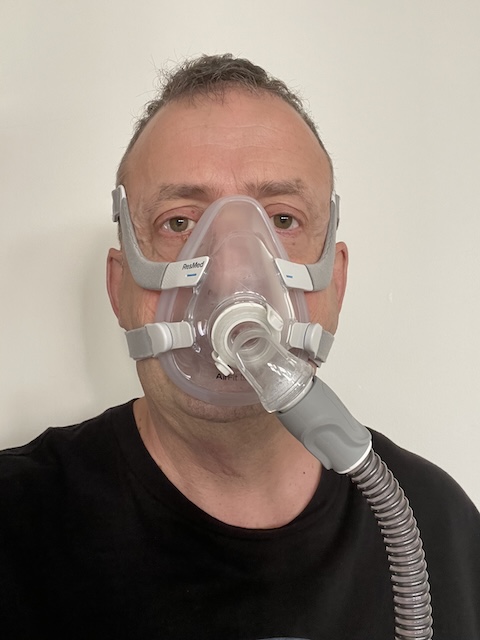
And here I am modelling the F20 mask!
✅ Universal fit with InfinitySeal cushion
✅ Whisper-quiet air vents for peaceful nights
✅ Secure seal even at high pressure, great for mouth breathers
✅ Compatible with most CPAP machines
❌ A bit bulky for some users
❌ May take a few nights to break in
This mask works well for users who experience frequent leaks with nasal masks or need higher-pressure therapy. It’s designed to adapt to many facial shapes and sizes. I especially appreciate the soft headgear—it feels plush, not rigid.
👉 Click here to read my full review of the ResMed F20 full face mask
ResMed AirFit F30 – Best for Side Sleepers
💬 “Another fantastic mask.”
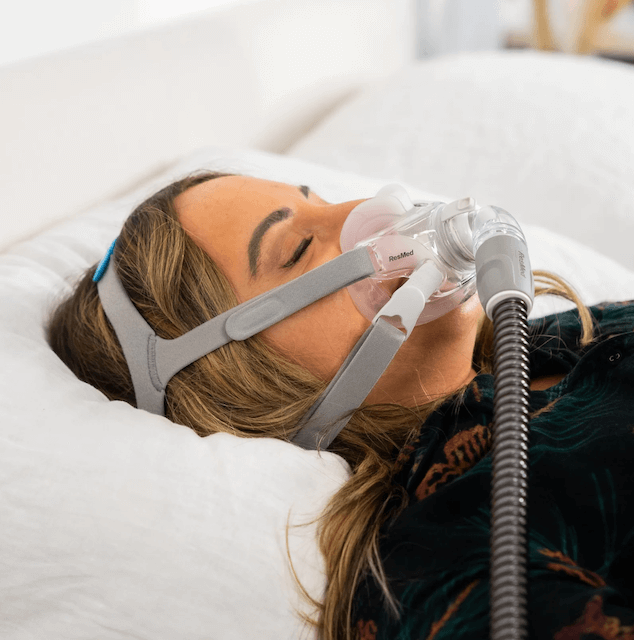
✅ Minimal facial contact with under-the-nose cushion
✅ Great for side sleepers and glasses wearers
✅ Magnetic clips for easy on/off at night
✅ Less red marks due to compact design
❌ Less ideal for higher pressure settings
❌ Might not seal as well for people with facial hair
The AirFit F30 has a modern, sleek frame and gives you an open line of sight. This is an excellent option if you like watching TV or reading in bed before sleep.
It’s the most comfortable model for side sleepers who need a full face design.
Philips Respironics DreamWear Full Face – Best for Combination Sleepers

✅ Top-of-head hose gives freedom to move
✅ Soft silicone frame and open design
✅ Excellent for stomach or side sleepers
✅ Reduces pressure on the bridge of the nose
❌ Might need frequent adjustments to avoid leaks
❌ Headgear is less durable over time
DreamWear’s hose location is a huge advantage if you toss and turn a lot. It stays out of the way, allowing more flexibility.
The airflow also feels very natural because it flows from the top rather than the front.
ResMed AirFit F40 – Best for Restless Sleepers
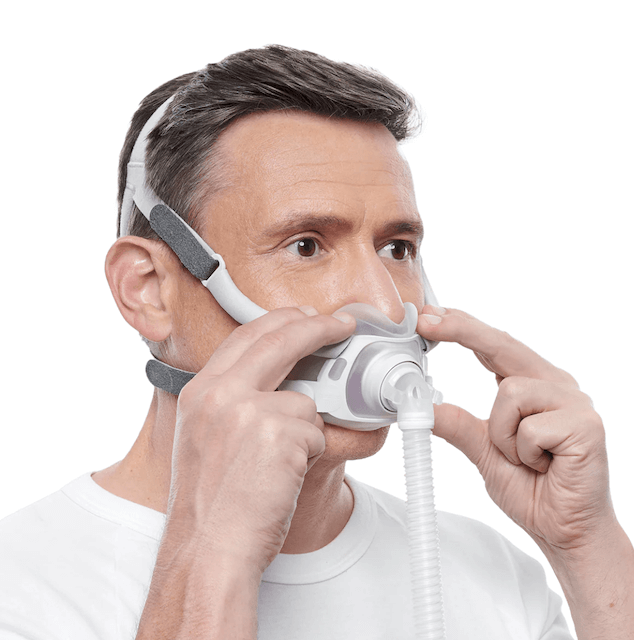
✅ Low-profile frame and compact cushion design
✅ Comes in a wide range of sizes
✅ Super stable during tossing and turning
✅ Soft silicone seals gently without sacrificing hold
❌ Can be hard to find in some locations
❌ Newer model, not as many user reviews yet
The F40 combines the sleekness of the F30 with better support for restless sleepers. The headgear doesn’t shift easily, even with a lot of movement. If it had been around when I first started therapy, it would have been a top choice for me.
🤔 Who Should Use a Full Face CPAP Mask?
You might benefit from a full face mask if:
- 😮 You breathe through your mouth during sleep
- 🤧 You have frequent nasal congestion, allergies, or sinus issues
- 💨 You require higher pressure settings from your CPAP machine
- 😴 You’ve tried nasal masks but experience leaks or discomfort
As someone with severe apnea and a tendency to breathe through my mouth, full-face masks have been essential. Nasal masks were not an option for me, but they may be for you.
✅ Benefits of Full Face Masks
- ✔️ Reliable therapy even with mouth breathing
- ✔️ Reduces dry mouth and throat irritation
- ✔️ Maintains a strong seal under high pressures
- ✔️ Covers both nose and mouth, so it’s great for cold nights when nasal breathing is tough
- ✔️ Often easier to wear if you have nasal blockages or a deviated septum
Many users report better adherence to therapy with full face masks simply because they’re less likely to leak, even when tossing and turning.
❌ Downsides to Consider
- ❗ Generally bulkier than nasal or pillow masks
- ❗ Can leave marks or cause skin irritation on the bridge of the nose
- ❗ May feel claustrophobic for first-time users
But here’s the thing: I always recommend giving it a full 7-10 nights. The first few days might feel odd, but your body adapts quickly. A little perseverance can lead to drastically better sleep quality.
🔍 How to Choose the Right Full Face Mask
Fit & Comfort
Look for cushions that contour to your face. ResMed’s InfinitySeal stands out for this—it adapts to different facial movements on the fly.
Sleeping Position
If you’re looking for a side sleeper mask, go with something minimal like the F30. If you’re looking for a combo sleeper, DreamWear’s top hose helps reduce the pull.
Pressure Needs
Higher pressures require a strong seal. The F20 is built for stability under pressure.
Facial Hair
Beards can disrupt mask seals. Due to their cushion design, the F20 and F40 perform better with facial hair.
Headgear Adjustability
Magnetic clips and multiple straps allow for fine-tuned adjustments. They also make putting the mask on and off easier, especially helpful if you get up during the night.
Vent Location
Side vents like on the F20 help reduce airflow onto your bed partner, making therapy quieter and more discreet.
🧼 How Often Should You Replace Your Mask?
Proper mask maintenance improves hygiene and extends its life:
- 🧽 Mask cushion: Replace every 3–6 months
- 🧴 Frame and headgear: Replace every 6–12 months
- 🚿 Clean daily: Use mild soap and warm water
- 🧺 Deep clean weekly: Soak parts in a vinegar solution for extra freshness
I keep a backup cushion on hand—nothing worse than dealing with a cracked seal before bed. You’ll know it’s time to replace it when leaks increase or the cushion feels less responsive.
❓ Full Face Mask FAQs
Can I use a full-face mask if I sleep on my side?
Yes, but choose a design that supports your sleep style. The F30 or DreamWear Full Face offers better performance in this area. You can also pair it with a CPAP pillow that has side cutouts.
Do full-face masks work with all CPAP machines?
Most modern CPAP masks are universal and work with standard tubing. However, always double-check compatibility if you use an auto-adjusting or BiPAP machine.
Will a full-face mask dry out my eyes?
Proper fit is key. A dry eye usually means a leak near the bridge of the nose. Try adjusting the straps or switching cushion sizes.
What if I feel claustrophobic wearing one?
Start by wearing it while watching TV. Get used to the feel before bedtime. Also, practice deep breathing with it on—many users overcome this feeling in just a few nights.
💬 My Experience with the F20
I was diagnosed with severe obstructive sleep apnea and started therapy with a nasal mask. It didn’t seal well and left me exhausted. Switching to the ResMed AirFit F20 was a turning point. It’s comfortable, quiet, and holds strong no matter how I move around. Best of all? No more morning headaches.
The plush headgear feels great. The InfinitySeal cushion never lets me down, even when I shift positions mid-sleep. For me, it’s been the perfect balance of stability and comfort. I trust it enough that it’s the only mask I travel with.
I’ve recommended it to family and friends—and now, to you.
Final Thoughts
A great full-face mask doesn’t just make therapy more tolerable—it makes it life-changing. From the ultra-comfortable F20 to the side-sleeper-friendly F30, there’s a perfect mask for every sleep style.
Take your time. Try a few. And remember, it might take a week or two to adjust—but once you find the right fit, sleep improves.
Let me know how you get on in the comments below.
Disclaimer: The content on this blog is for informational and educational purposes only and is not a substitute for professional medical advice. Always speak with your doctor or sleep specialist before starting, stopping, or changing any treatment or therapy related to sleep apnea or CPAP use.
